If you’ve ever been dehydrated while hiking it can be really scary. For me, it usually starts out as a headache, but for severe cases, it can lead to muscle cramps, dizziness, and confusion – none of which are good if you are miles away from your car.
Fortunately, it’s pretty easy to stay hydrated on the trail if you are consuming enough water and have the right tools. With a little preparation, some simple gear, and paying attention to how much you are drinking, you can prevent dehydration while your hiking.
In this post, I share my top tips and the gear I use to ensure I stay hydrated while I’m hiking.
1. Use a hydration backpack
My biggest tip for making sure you consume enough water while hiking is to use a hydration backpack. These packs are designed with removable water reservoirs (aka water bladders) that you can fill up before your hike and drink from via a connected hydration hose.
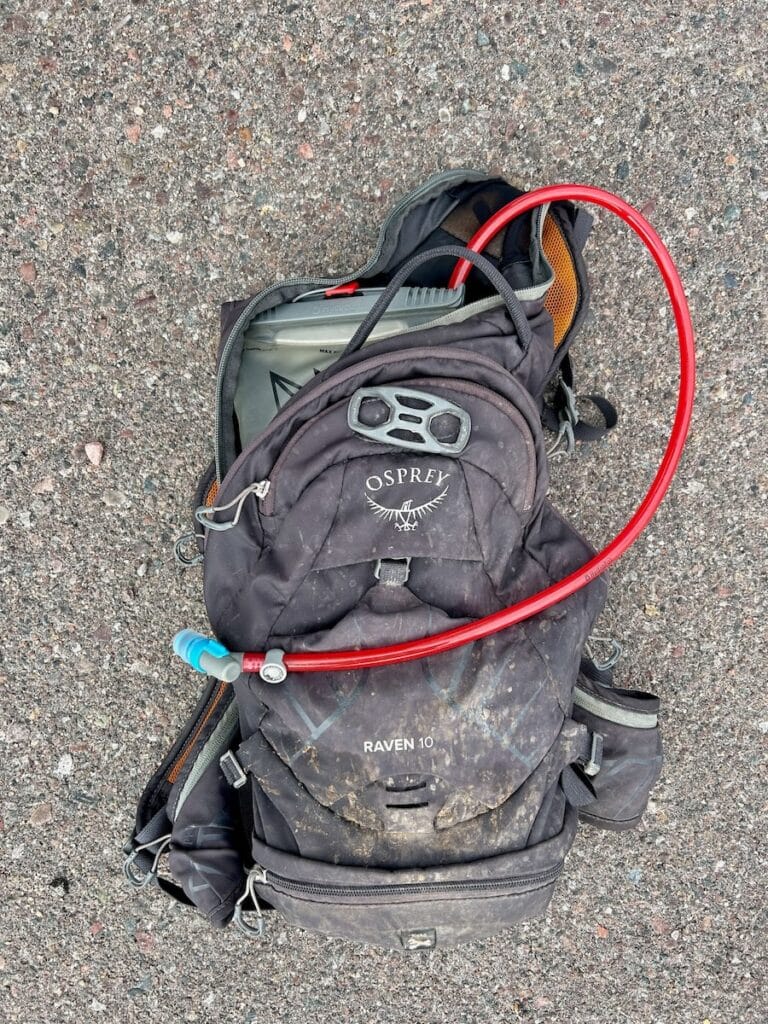
The Osprey Raven 10
Hydration backpacks are super convenient because it allows you to drink without having to stop, pull out your water bottle, and guzzle it before you start hiking again. With a hydration reservoir I constantly take little sips while I’m moving. This prevents my mouth from getting dry, and I find that I end up drinking a lot more water than I would otherwise.
Hydration packs come in all shapes and sizes. Check out my post on the best women’s day packs for my top picks. The Osprey Raven 10 (the men’s version is the Osprey Raptor 10) comes with a 2.5-liter hydration reservoir and is a great choice for shorter hikes when you don’t need to carry a lot of gear besides water and snacks.
For longer day hikes, I like the 30 liter Gregory Juno (the men’s version is the Gregory Citro). It easily fits a 3 liter reservoir which is enough for a typical dayhike, with tons of room for your extra layers and gear.
2. Take regular water breaks
Even if you are using a hydration pack that allows you to frequently sip water during your hike, it’s still a good idea to get into the habit of taking regular water breaks. Breaks give your body the opportunity to cool down so you don’t sweat as much (which can lead to dehydration) and you can better enjoy the views!
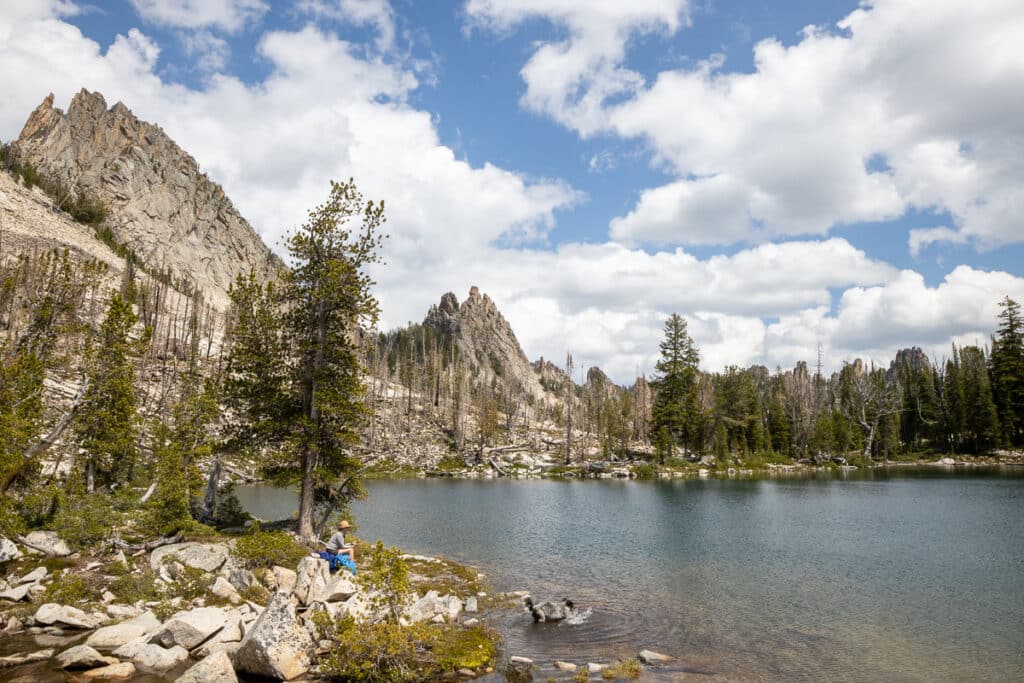
Take water breaks to help your body cool down and stay hydrated
3. Eat salty snacks
Salt is an electrolyte and it helps maintain fluid balance in your body. Since you lose salt when you sweat, it’s important to replenish those electrolyte stores so your body can maintain a proper fluid balance. In severe cases, low salt concentration in your body can lead to a condition called hyponatremia. (Sidenote: hyponatremia can also happen if you overhydrate since that too affects salt concentrations in your body. This happened to me at a music festival once after 4 days of chugging water, and I ended up in the medic booth with an IV in my arm).
To keep my salt levels in check, I like to pack salty snacks on my hikes like salted nuts, pretzels, vegan jerky, peanut butter, and chips. See my post on the best hiking snacks for some ideas.
4. Pack electrolyte tablets or powder
If you tend to sweat a lot or you’re in a particularly humid environment, it’s good to pack some electrolytes in addition to your snacks. On the John Muir Trail I relied on SaltStick capsules, and I truly believe they helped give me a boost on those tough mountain passes. I like these capsules because you just swallow them vs having to add something to your water.
There are also electrolyte powders that you mix with water. These are good because it forces you to drink more water instead of just swallowing a pill. I like to drink the powder either before or after a hike, and then I take the capsules with me on my hikes.
For the powders, I really like DripDrop’s Sugar Free Passion Fruit powder packets. It’s a lot less sweet than some of the other brands like Liquid IV. If you don’t mind sweet, then they sell Liquid IV at Costco which is a bit cheaper than buying on Amazon.
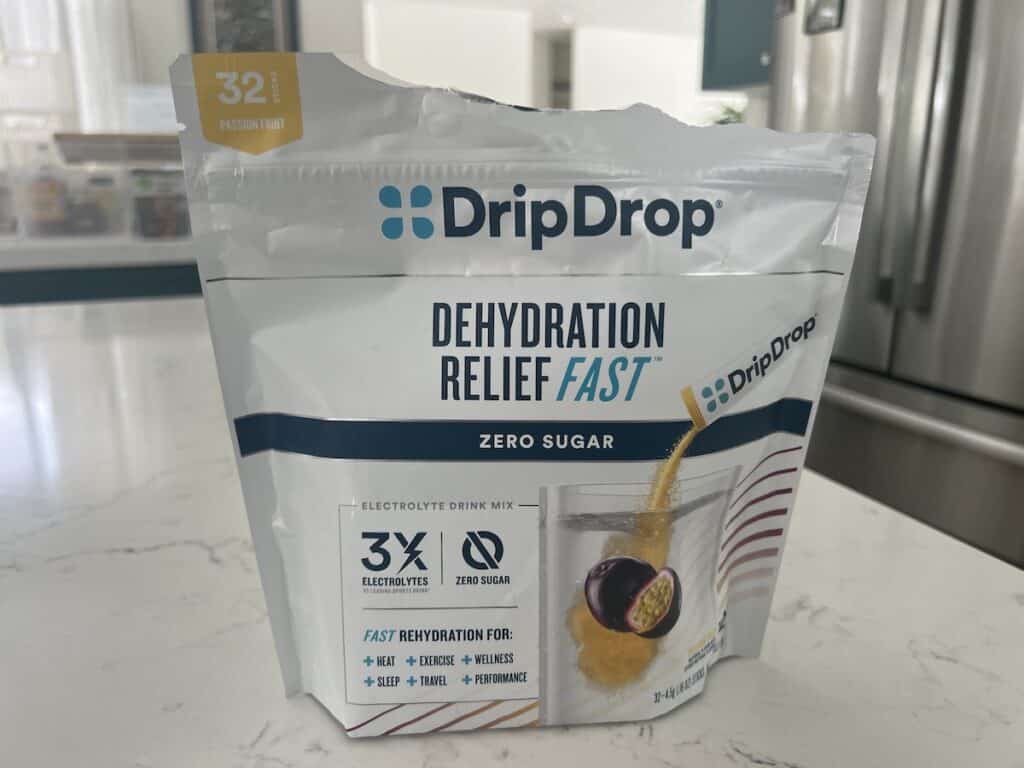
5. Research your water sources
If you’re heading out on a longer day hike or a multi-day backpacking trip, it’s essential that you research reliable water sources ahead of time. You may see a creek on a map, but that doesn’t mean there will be water in it. Many streams on maps dry up and only have water running at certain times of year.
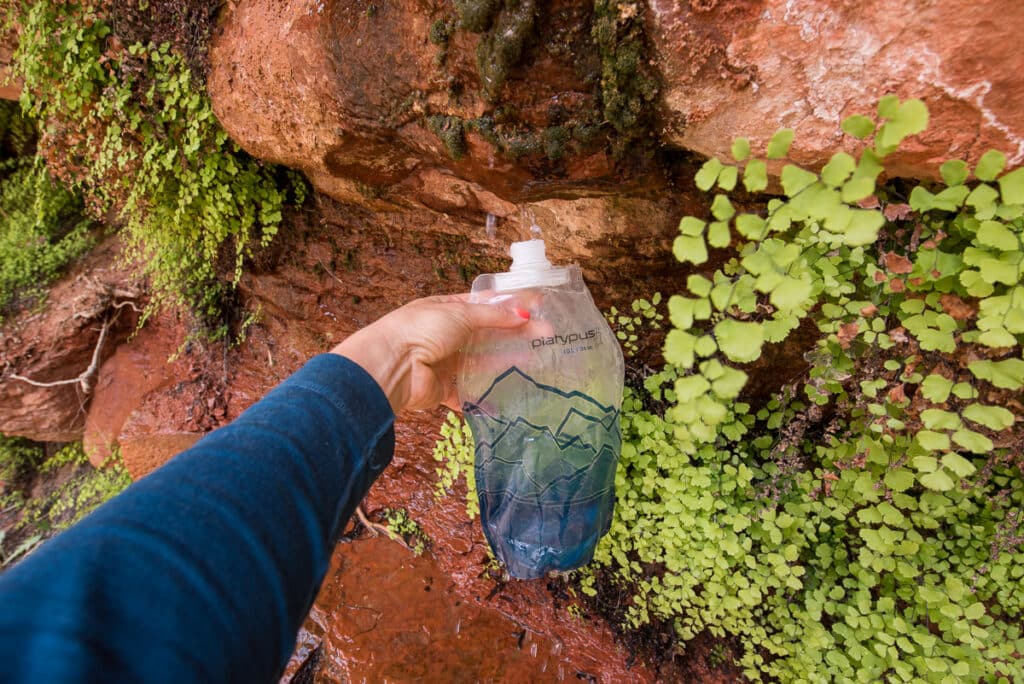
Filling up my water from a natural spring I researched and marked on my map
It’s critical to know if and where you can find water. That way you can make sure you bring enough from home to get you through the dry stretches. Some resources I use for researching water levels are SnoFlo and the National Water Prediction Service. You can also read recent reviews on hiking trail apps or call the local ranger station.
6. Carry a water filter
If you know there will be water along your hike, it’s a good idea to pack a small water filter like the Sawyer Squeeze or water bottle with a filter built in. These only weigh a few ounces, and even if you don’t end up using it, it can add some peace of mind. For more recommendations, check out my post on the best lightweight water filters.
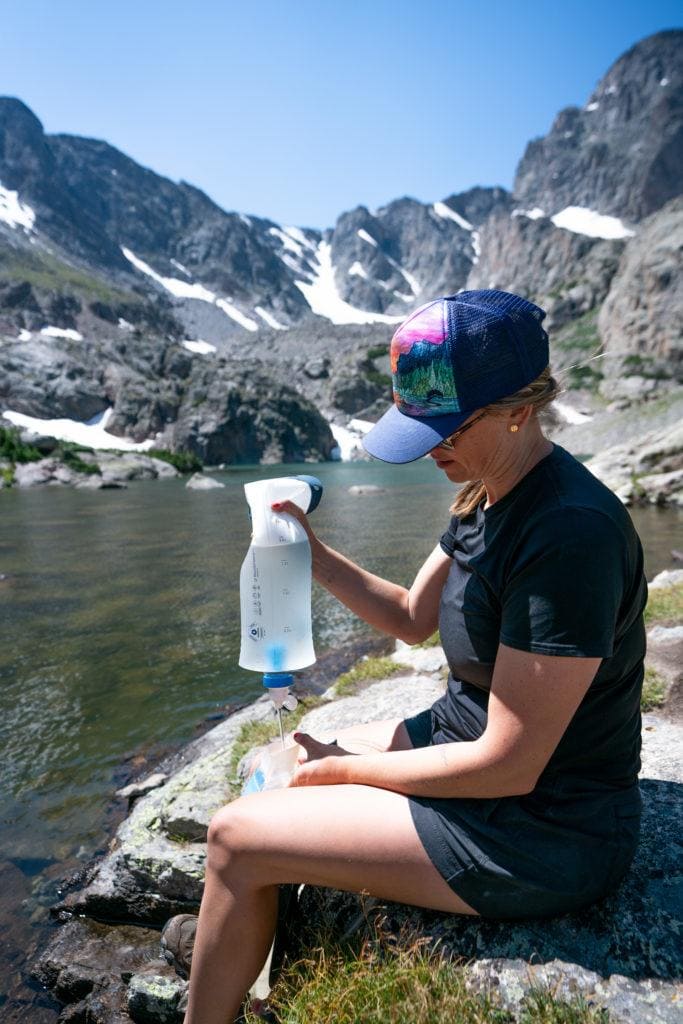
Filtering my water in Rocky Mountain National Park
Don’t drink unfiltered water
It may be tempting to refill your water bottles from that crystal-clear mountain stream, but trust me – it’s not worth the risk of getting giardia or other waterborne disease. Always filter your water before drinking it.
7. Hydrate before you’re thirsty
This is a big one. Feeling thirsty means you’re already dehydrated. Make sure you’re drinking water frequently throughout your hike and if you do start to feel thirsty, take a break to eat some salty snacks and drink plenty of water.
8. Know the signs of dehydration
Dehydration can happen quickly without you even realizing it. It’s important to know the signs and symptoms of dehydration so you can avoid getting into an uncomfortable – or even dangerous – situation.
- Thirst: Thirst is one of the earliest signs of dehydration. If you’re feeling thirsty, your body is already starting to lose fluids.
- Dark urine: Dark yellow or amber-colored urine is a common indicator of dehydration.
- Decreased urination: If you notice that you don’t have to pee as often as you normally do, that’s an indication that your body is dehydrated and trying to hold on to fluids so it doesn’t become more dehydrated.
- Dry mouth and lips: Saliva production decreases when you’re dehydrated, which leads to a parched feeling in your mouth.
- Fatigue and weakness: Dehydration can make you feel fatigued, lethargic, weak, and wobbly.
- Dizziness or lightheadedness: Reduced blood volume due to dehydration can lead to decreased blood flow to the brain, resulting in feelings of dizziness or lightheadedness.
- Headache: Dehydration can trigger headaches or migraines in some individuals. A lot of hikers get headaches post-hike if they didn’t drink enough fluids during the day.
- Rapid heart rate: Dehydration can cause your heart rate to increase as your body attempts to maintain blood pressure and circulation with less fluid volume.
- Muscle cramps: Dehydration can lead to electrolyte imbalances, resulting in muscle cramps or spasms.
- Confusion or irritability: Severe dehydration may impair cognitive function and lead to confusion, irritability, or difficulty focusing and concentrating.
9. Wear breathable clothing
You want to choose lightweight, breathable hiking clothes that allow sweat to evaporate quickly. This helps regulate your body temperature and prevent excessive fluid loss.
If you wear clothes made from cotton or other non-breathable materials, you run the risk of overheating and sweating more than necessary, both of which can cause more rapid dehydration.
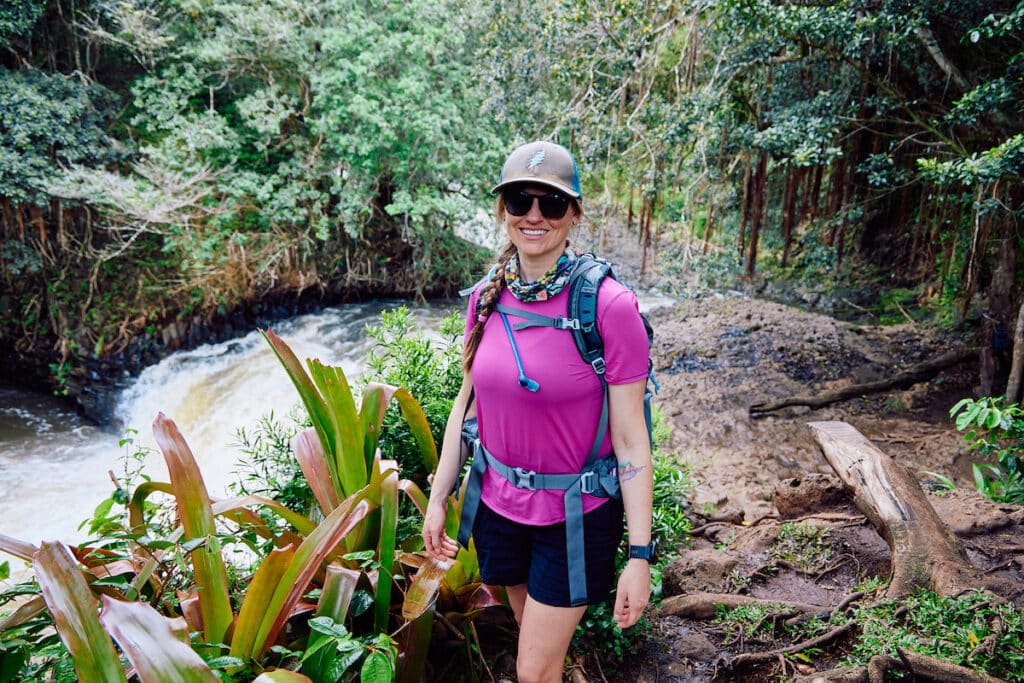
Wear lightweight, breathable clothing that wicks aways moisture and leaves you cool and dry
8. Protect your skin from the sun
If you’re hiking in the desert or on a trail exposed to the sun, you want to make sure you protect your face and skin from the UV rays. Being exposed to direct sunlight can quickly sap moisture from your body, leaving you dehydrated more quickly than if you were hiking in the woods.
Here are a few ways to protect your skin from the sun:
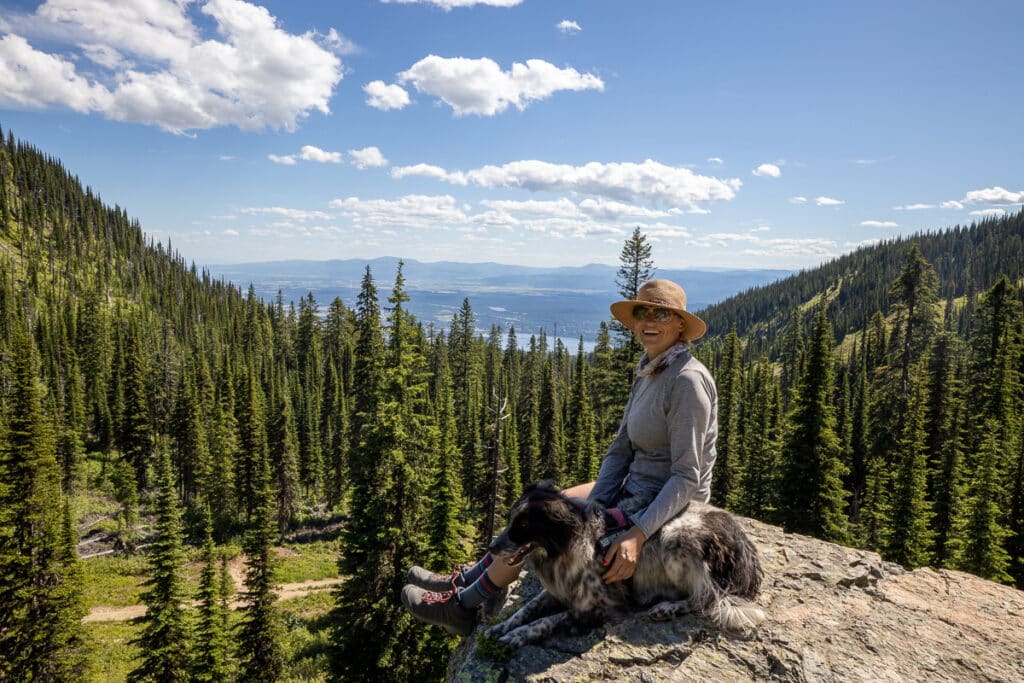
These days, I always wear long sleeves, a sun hat, sunglasses, and Buff on my hikes
9. Pace yourself
Many of us enjoy getting outside for exercise, but one big tip for how to stay hydrated while hiking is to pace yourself. Going too hard and fast can leave you a sweaty and dehydrated mess. Instead, you want to choose a pace that is comfortable for you and won’t leave you feeling dizzy and overheated.
Figuring out your hiking pace is very personal. If you’re hiking with a friend or in a group, you may feel pressure to keep up, but it’s important to listen to your body and choose a pace that works for you.
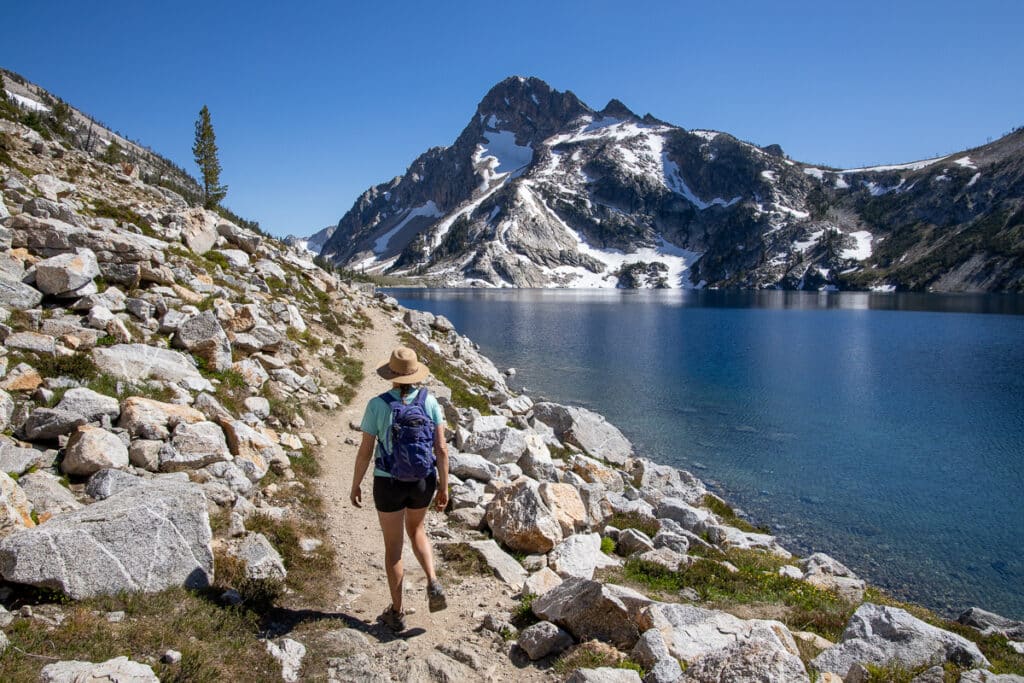
If you feel yourself getting overheated, slow down and enjoy the view (like this one at Idaho’s Sawtooth Lake)
10. Encourage your hiking buddies to hydrate
Lastly, a great way to make sure you and your friends are drinking enough is to encourage each other. Remind one another to drink water regularly and check in on each other’s hydration levels. This is especially useful on backpacking trips or day hikes in the desert.
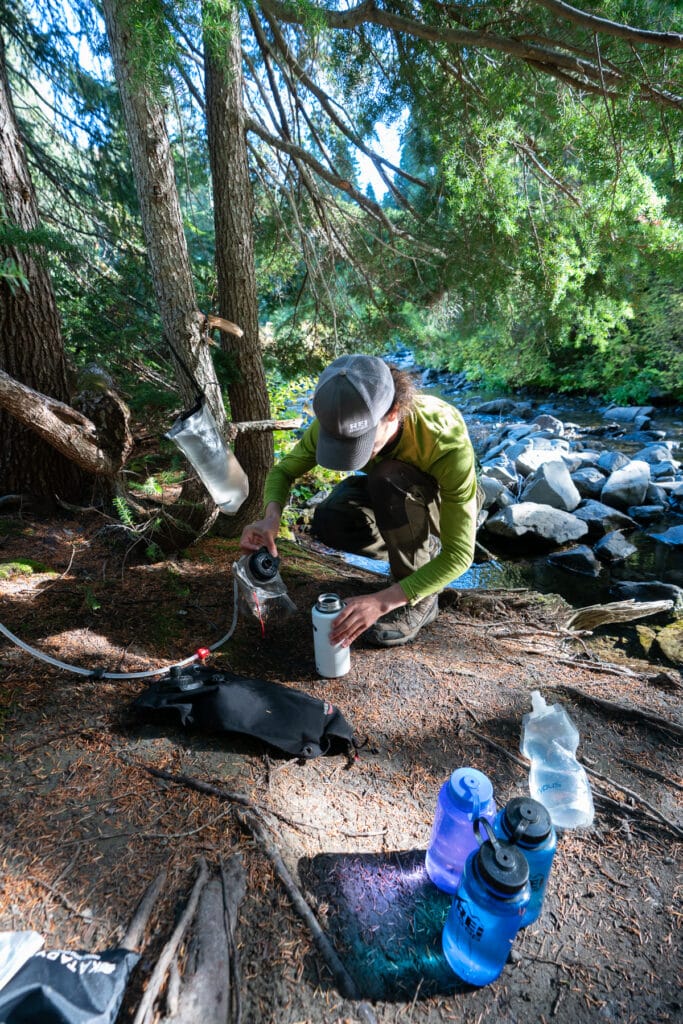
Offer to filter water for your hiking buddies!
Save this post to Pinterest
What tips do you have on how to stay hydrated while hiking? Do you have a story about getting dehydrated on the trail? What did you learn about that experience? Leave a comment below!
The post 10 Tips For Staying Hydrated While Hiking appeared first on Bearfoot Theory.
https://bearfoottheory.com/hiking-hydration-tips/
 CampingSurvivalistHuntingFishingExploringHikingPrivacy PolicyTerms And Conditions
CampingSurvivalistHuntingFishingExploringHikingPrivacy PolicyTerms And Conditions
